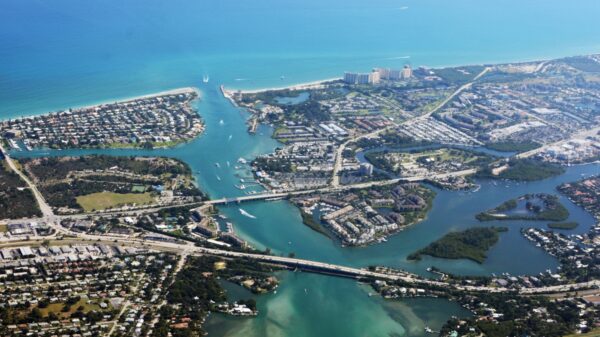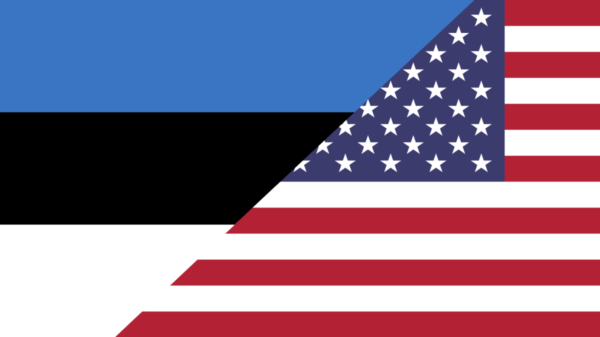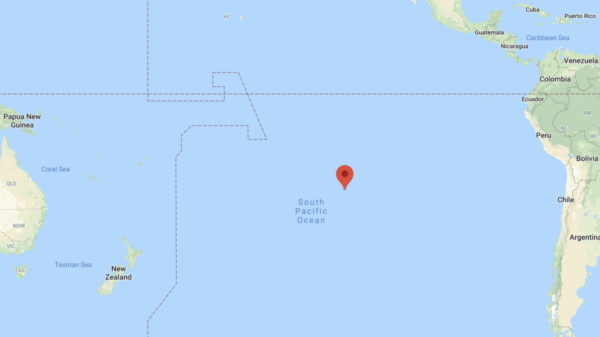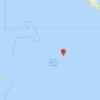A growing number of Canadians are making the transition to location independence. This transition often comes with tax consequences and in this article, I explain what they are. I also cover how Canadian taxation works for non-residents, businesses and more.
Tax residency
Canada is a residential taxation country, this means that tax residents pay Canadian taxes on their worldwide income while non-residents only pay Canadian taxes on their Canadian income.
Unlike most residential taxation countries, Canada relies primarily on domicile rules when it comes to determining the tax residency status of individuals. The way it works is as follow:
If your place of domicile is Canada, you will be deemed a Canadian tax resident, regardless of how many days you spend in the country during a fiscal year (in technical terms, you will qualify as a “factual” resident for tax purposes). Your place of domicile, from a tax perspective, is essentially where you call home. You will usually have several ties there, such as a house, a car, family members, a job or business, several memberships etc.
If you have cut all / most of your Canadian ties, or if your place of domicile is not Canada, you will be deemed a non-resident of Canada for tax purposes, provided that you spend no more than 182 days in the country during a fiscal year. Do note that partial days count towards the 182 days limit.
There are rare situations in which you may spend more than 182 days in the country during a fiscal year but still qualify as a non-resident of Canada for tax purposes. For example, if you meet the requirements for a tax treaty tie breaker clause (provided that there is such a treaty between Canada and your country of tax residence).
If you qualify as a Canadian tax resident, you will have to pay federal taxes. For regular income, the rate starts at 15% for the first 48535 CAD and it goes all the way to 33% on income above 214368 CAD. Capital gains will usually be taxed as regular income, albeit only half of their value has to be reported (for example, if you realize a 1000 CAD gain you will report 500 CAD and will only be taxed on that 500 CAD). Self employment and partnership income will usually also be taxed as regular income. Depending on your situation, you may have to contribute to the CPP (or QPP) and the EI program.
In addition to the above, you will also have to pay provincial or territorial taxes. The rates are progressive and will vary depending on your province or territory of residence, starting at 4% in Nunavut on the first 46277 CAD and going all the way to 25.75% in Quebec on income over 106555 CAD.
To put that into perspective, if you are self-employed in Ontario and earn 80000 CAD after deductions in 2025, you will pay 21700 CAD in combined taxes (less if you contribute to an RRSP or similar). If you instead are in Quebec, you will pay 26000 CAD in combined taxes.
This highlights the importance of choosing the right province or territory, if you are location independent but want to maintain your Canadian tax residency or if you want to become a Canadian tax resident. Do keep in mind that in most provinces, qualifying as a tax resident will not necessarily equate to qualifying for public health coverage (there is usually a physical presence requirement for that). Ontario is one of the few provinces where you can maintain coverage with no physical presence (via the mobile worker program).
If you are deemed a non-resident of Canada for tax purposes, you will only have to pay federal taxes on your Canadian income (usually at a flat 25% rate). Canadian income refers to income from work performed while physically in Canada, income from a resident partnership, income from Canadian capital gains and income from assets and investments located in Canada (for example, rental income from a Canadian property). If you have no Canadian income, you will be exempt from Canadian taxation. Sounds appealing, eh?
Leaving Canada
Leaving Canada for tax purposes can result in significant tax savings, in some cases it may even result in the complete elimination of personal taxation. Unfortunately, taking this step is not as simple as buying a plane ticket and leaving. There are conditions that must be met for you to be deemed a non-resident of Canada for tax purposes. There are also implications, such as the loss of provincial or territorial public health coverage (even if you meet the days requirement, 153 in Ontario for example, you will not be eligible for coverage as a non-domiciled individual), the capital gains exit tax, the loss of contribution room accumulation for future years and the tax treatment of your registered investment accounts (RRSP, TFSA…) etc.
To make this complicated process easier to understand, I will divide it in three parts.
Part one is the preparation part, it starts now and ends on the day of your departure. During the preparation part, you must decide where you will move to. That will likely be where you qualify as a tax resident in the future (it may have an impact on the process). If you have no destination in mind and instead plan to travel non-stop for a number of years, you will have to begin the implementation of the flag theory. Choose your tax residency flag carefully, not only will it affect your future personal tax liabilities but it will also affect the process of leaving Canada. Can a Canadian citizen be a tax resident of nowhere? Technically-speaking, yes, but in practice this is risky and there have been cases of the CRA successfully challenged such claims.
You must also prepare your personal finances and this will include closing all unnecessary accounts (or that you cannot keep as a non-resident, not usually an issue with the big five), preparing a currency conversion strategy (if you do not want to keep everything in CAD), liquidating any open investment positions not held in registered accounts, liquidating any stake you hold in Canadian Controlled Private Corporations (to take advantage of the nearly 900000 CAD lifetime exemption for tax residents) and settling any debt outstanding.
You must also cut as many ties as possible. Ties, in the context of tax residence, include a permanent home (house, condo, apartment etc), cars, local memberships (gym, clubs etc), local employment or a business, dependant children, a drivers license etc. Except for the permanent home, none of those other ties must absolutely be cut, you should simply cut as many as possible so as to give the CRA as little ground as possible to contest your claim of non-residency. Do keep in mind that some ties should only be cut when already replaced (for example, your drivers license).
If applicable, you must also apply for a visa or residency permit for your new country of tax residency.
Part two is the move part, it starts on the day of your departure and ends as soon as you are settled into your new country of tax residency (or have completed planting your tax residency flag).
During the move part, you must setup all the infrastructure you will need now that you have left Canada. This will include opening new bank accounts, applying for new credit cards, a new health insurance policy, a new phone number (you will have to update all your existing accounts with it before you cancel your Canadian phone number, to ensure that you can receive two factor authentications texts), a new drivers license etc.
When the time comes (after the end of the fiscal year during which you leave Canada), you will need to file your final Canadian tax return. All income earned up to the day of your departure must be reported on the return. Depending on your individual circumstances, you may also be required to file additional forms. For example, form T1161 if you owned qualifying properties worth over 25000 CAD (combined value) on the day you left the country and form T2061 to report deemed capital gains or losses on said properties.
Part three is the non-resident part, it starts as soon as you are settled into your new country of tax residency and will end only if you re-establish residency in Canada for tax purposes.
During the non-resident part, you must keep track of your Canadian tax liabilities, if any, and must ensure compliance in both Canada and your new country of tax residency. This brings us to the next point, how does taxation for non-residents work?
Taxation for non-residents
If you qualify as a non-resident of Canada for tax purposes and receive no Canadian income whatsoever, you will have no tax liability in Canada and no filing obligations. In other words, you will be completely free from Canadian bureaucracy.
If you do receive Canadian income, you will likely have a tax liability in Canada and will, in some cases, have filing obligations. There are multiple types of income and each type is treated differently. For the purpose of this article, I will cover the three most common.
If you receive employment income from a Canadian company, for work performed while physically outside of Canada, no Canadian tax will apply. In other words, if you leave Canada but keep your Canadian job (provided that they allow you to work remotely), you will receive your employment income with no Canadian tax deducted from the day you become a non-resident for tax purposes. It will be up to you to report that employment income in your new country of tax residency (and pay applicable taxes, if any).
If you receive employment income, for work performed while physically in Canada, you will have to report said income by filing a Canadian tax return and will likely have to pay tax if none was withheld at the source (see T4058 for more information on which return forms to use). In such a case, it does not matter whether the employer is Canadian or foreign (as is common in tax law, what matters is where work is performed).
If you receive rental income from Canadian properties, you will have to appoint a withholding agent (it is possible to do the withholding yourself but it is a real hassle). The withholding agent will remit any tax due to the CRA, on a monthly basis, and will handle the filing of all application forms. In most cases, you will pay 25% on your rental income, net of expenses and the capital cost allowance.
If you receive passive income (excluding rental income) from Canadian sources, you will have to inform the payer(s) of your tax residency status so that they can withhold tax at the correct rate (the reporting burden lies with the payer, not you). The rate is indeed variable and depends on the type of income received and whether there is a tax treaty between Canada and your country of tax residency (many treaties provide for preferential rates). For example, if your country of tax residency is the UK and you receive dividends from Canadian sources, the withholding tax rate will be 15% (instead of the general 25% rate).
Business taxation
If you are a resident of Canada for tax purposes, and also run your business from Canada, you have a number of options when it comes to structuring said business. You can run it as an unregistered business, in which case you report its income on your personal tax return as self-employment income (taxed as regular personal income, subject to CPP or QPP contributions, not subject to EI contributions). This is the easiest, and usually cheapest, option but is only suitable for micro-businesses. You can run it as an LLP (Limited Liability Partnership) or LP (Limited Partnership) if you want the same reporting simplicity and personal-level taxation but with the benefits of liability protection and legal separation. You can also run it as a corporation, in which case it becomes a separate entity not only for legal purposes but also tax purposes. This is the best option for the vast majority of Canadian businesses.
A corporation, majority owned and controlled by Canadian residents, is eligible for the lower CCPC rates. At the federal level, this means a flat 9% on the first 500000 CAD in annual profits and 15% above that. At the provincial and territorial level, the rates vary. For example, Ontario’s rate is 3.2% on the first 500000 CAD in annual profits and 11.5% above that. An Ontario corporation would thus pay 12.2% in combined federal and provincial tax on its first 500000 CAD in annual profits and then 26.5% above that. You can find the rates for each provinces and territories here.
There are many ways you can use to transfer profits from a corporation to yourself. You can pay yourself dividends, they will be taxed as regular income minus a credit for corporation tax paid (not subject to CPP / QPP / EI). You can pay yourself a salary, useful if you want to reduce profitability (subject to CPP / QPP, not EI) and increase your RRSP contribution room. You can also get creative and use loans, royalties, interests etc. Often, you can even combine all of the above.
If you are not a Canadian tax residents, and do not run your business from Canada, using a Canadian pass-through entity can be a very efficient way to structure your business and a great alternative to the more popular US LLC and UK LLP structures. My favourite Canadian pass-through entities are the Ontario LP and the British Columbia LLP.
It is also possible to register a corporation in Canada as a non-resident, albeit only at the provincial level and only in five provinces and three territories (British Columbia, Quebec, New Brunswick, Nova Scotia, Prince Edward Island, Yukon, Northwest Territories and Nunavut). Do note that a Canadian corporation owned and controlled by non-residents will not be eligible for the CCPC rates.


































